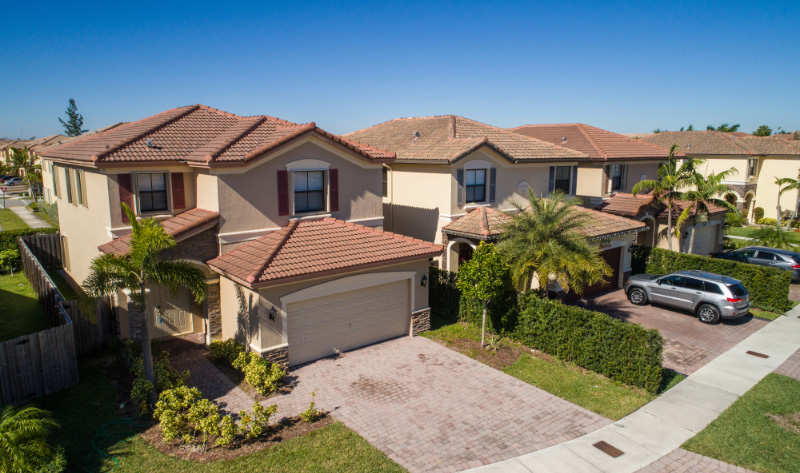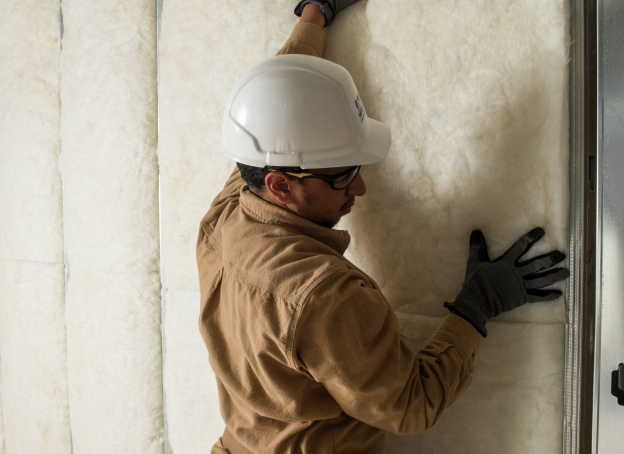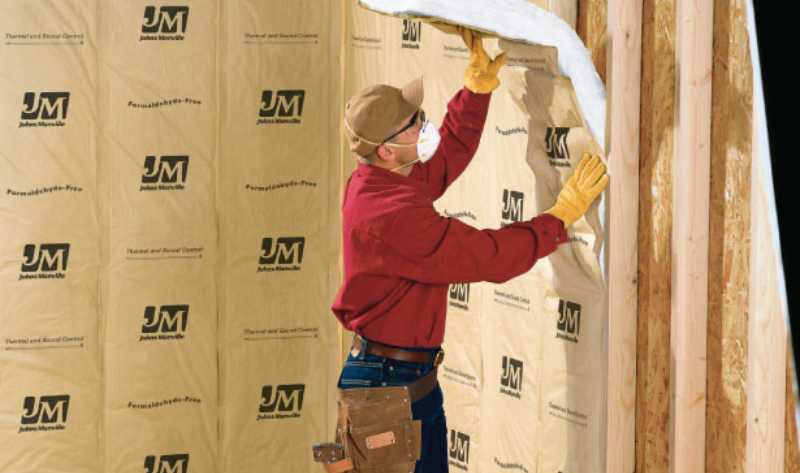Living in Florida means getting used to our hot, humid climate. But it shouldn’t mean sacrificing a comfortable and energy-efficient home because of it. Insulation saves the day as the key to staying comfy in your Florida home. But what type of insulation is the best choice?
Let’s explore two commonly used insulation materials (spray foam and fiberglass) and how well they stack up against our Florida climate.
Florida’s Climate and Insulation Needs

Before choosing an insulation, it’s important to understand what you need in an insulation. Dealing with our intense heat, high humidity, very rainy summers, and occasional hurricanes calls for an insulation material that blocks air leakage, stands up to storm damage, and resists moisture.
Up to 40% of your home’s energy loss is due to air leaks, so choosing an insulation that doubles as an air barrier, especially of moist air, can lead to long term energy savings. With it you’ll be able to keep the cooled air in and the humid air out.
Spray Foam Insulation
Spray foam insulation is a high-performance, modern solution that comes in two forms, open-cell and closed-cell spray foam. Both are sprayed on as a thick liquid that expands to fill gaps and seal cracks.
Performance
- Closed-cell foam has a higher R-value of approximately 6.5-7.0 per inch, making it excellent at reducing heat transfer.
- Open-cell foam is slightly less dense with an R-value of around 4.0 per inch.
- Both types can reduce your home’s air leakage to almost zero.
- It’s the only insulation that also provides an air barrier too.

Energy Efficiency
- Its high R-value combined with its air sealing properties give it superior performance that cuts your energy bills by 15% or more.
- When applied to your roof deck, spray foam creates an unvented attic, keeping the space cooler and preventing ducts from picking up extra heat and moisture.
Moisture & Durability
- Closed-cell spray foam is FEMA-approved for flood zones because it doesn’t retain water after it gets wet. Open-cell spray foam is not water resistant.
- It adds structural strength to help resist strong winds.
Installation
- It requires professional installation due to special equipment, protective gear and area ventilation during curing.
- Once set up, application is quick as the foam expands to fill in all gaps, including irregular shaped spaces.
- It encapsulates wires and pipes behind walls.
Fiberglass Insulation
Fiberglass is a familiar and cost-effective insulation choice. Made from tiny, spun glass fibers, it’s a time-tested insulation that’s been used in Florida homes for decades.
Performance
- It comes in fiberglass batts (flexible blankets) or loose fill, which is blown into attics.
- Its R-value ranges from about 2.5 to 3.5 per inch.
- It requires more thickness than spray foam to achieve the same desired R-value.

Energy Efficiency
- It slows down conductive heat flow through air pockets between fibers.
- It doesn’t stop air leakage, so pairing it with air sealing is important.
- There are high-density fiberglass options to help you achieve higher R-values.
- It’s highly efficient when your attic or walls are well sealed and insulated with the appropriate thickness.
Durability & Installation
- It’s made of inorganic material, so it doesn’t rot.
- Fiberglass can last 20-30 years if it’s kept dry and undisturbed.
- It may compress or settle over time, losing some efficiency.
- It must be replaced if it gets wet.
- Fiberglass batts must fit snugly around obstacles when installed.
- Blown-in loose fill installation requires a machine but fills gaps better than batts.
Suitability for Florida
- Fiberglass is a popular choice thanks to its easy availability and affordability.
- It insulates well if your attic is properly ventilated.
- It doesn’t prevent moisture, requiring soffit vents and ridge vents for moisture control.
- You’ll need attic check-ups every few years to ensure your insulation hasn’t been compromised by moisture or compression.
Best Choice for Your Florida Home
When it comes to your Florida home, spray foam insulation offers the best all-around performance. Its ability to stop air leakage, resist moisture, and strengthen your structure make it a Florida-friendly option and the top choice. Fiberglass is also a solid, cost-effective option if moisture control and ventilation are in place.
When choosing the right insulation for your Florida home, you want to consider your energy efficiency goals and seek expert advice. Our experienced team at Leed Insulation has been serving homeowners and builders along the east coast of Florida for over 30 years. Locals count on us to assess their home or building and provide optimal insulation solutions for lower energy bills, building code compliance, and a comfier home. You can too. Contact us today for your free estimate.
References
“Air Barrier Properties and Building Envelope Science.” Adhesives & Sealants Industry Magazine.
https://www.adhesivesmag.com/articles/86750-air-barrier-properties-and-building-envelope-science
“The Importance of Residential and Commercial Building Insulation.” Oklahoma State University Extension.
https://extension.okstate.edu/fact-sheets/the-importance-of-residential-and-commercial-building-insulation.html
“How Closed-Cell Spray Foam Can Protect Homes During Hurricane Season.” The International Building Envelope Consortium (IBEC).
https://theibe.org/how-closed-cell-spray-foam-can-protect-homes-during-hurricane-season/
“Attic Insulation Inspection Guide.” Washington State University Energy Program.
https://www.energy.wsu.edu/documents/AHT_Inspection%20Attic%20Insulation.pdf
“Insulation Materials.” U.S. Department of Energy.
https://www.energy.gov/energysaver/insulation-materials
